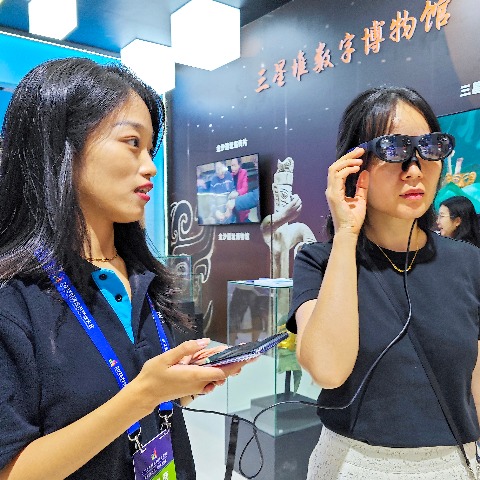




China will ratchet up resources to further expand the application of new generation display technologies in fields such as 5G communications, artificial intelligence, the internet of things, new energy vehicles and the metaverse, as part of a broader push to build a modern industrial system, the country's top industry regulator said on Thursday.
Zhang Yunming, vice-minister of industry and information technology, said more efforts are needed to enhance the resilience of industrial and supply chains, consolidate enterprises' prominent role in propelling technological innovation and make breakthroughs in core areas of the new display industry.
Zhang made the remarks at the opening ceremony of the 2023 World Conference on Display Industry, which kicked off on Thursday in Chengdu, capital of Sichuan province.
He emphasized the significance of the new display industry in accelerating the building of the country's strength in manufacturing and cyberspace, and a digital China, while calling for enhanced policy guidance and strengthened international cooperation in the strategic emerging sector.
The country will speed up industrialization in emerging display technologies, including micro light-emitting diodes, organic light-emitting diodes and three-dimensional displays, and rev up fiscal support to promote the development of innovation in the new display industry.
Official data showed the output of China's new display industry exceeded 490 billion yuan ($66.9 billion) in 2022, ranking tops worldwide and accounting for 36 percent of the global total.
The surface area of the country's display devices shipped last year amounted to 160 million square meters, while China's production capacities of smartphones, televisions, laptops and tablets took top spots globally.
The new display products have accelerated integration with emerging industries, such as 5G, AI and IoT, and great achievements have been made in industrial management, automotive electronics, telemedicine and smart cities, thus promoting digital and intelligent transformation in a wide range of sectors, Zhang added.
Compared with traditional liquid crystal displays, new display technologies boast great improvements in terms of image contrast, brightness and color spectrum.
BOE Technology Group Co Ltd, a leading Chinese display panel maker, is doubling down on new generation display technologies, including flexible OLED and micro/mini LED displays, which have immense application potential in various fields such as smartphones, vehicle-mounted displays and wearable gadgets.
Chen Yanshun, chairman of the company, said BOE has invested more than 100 billion yuan in Sichuan and aims to build flexible OLED industrial clusters in Southwestern China. Currently, it owns three flexible active-matrix organic light-emitting diode — AMOLED — production lines in Chengdu, Mianyang and Chongqing.
Statistics from Sigmaintell Consulting, a Beijing-based market research firm, showed that BOE topped the domestic market with shipments of flexible OLED panels used in smartphones reaching 76.65 million units last year, making it the world's second-largest OLED maker after South Korea's Samsung Display.
Yan Ruoyuan, co-president of Chinese display panel supplier Visionox Technology Inc, said global shipments of OLED panels for the entire sector will surpass 1 billion units in 2028, with output surpassing $55 billion, representing a compound annual growth rate of 7 percent.
The penetration rate of AMOLED panels in mobile phones is expected to reach 50 percent in 2023, Yan said, estimating the figure will likely hit 60 to 70 percent within the next three to five years. Meanwhile, there is an increasing demand for OLED panels in medium-sized display products, such as laptops and tablets.
Visionox will promote technological innovations for OLED, which enjoy broader applications in computers, vehicle-mounted devices, augmented reality, virtual reality and smart televisions.
China will overtake South Korea to become the top OLED manufacturer by 2024, as Chinese companies have invested heavily in new OLED production lines, said Zhou Hua, chief analyst at CINNO Research, a Chinese panel display consultancy firm.
Chen Jun, vice-president and chief analyst of Sigmaintell, said shipments of flexible OLED panels used for smartphones in China will likely surpass 220 million units in 2023, an increase of nearly 40 percent year-on-year.
fanfeifei@chinadaily.com.cn
If you have any problems with this article, please contact us at app@chinadaily.com.cn and we'll immediately get back to you.